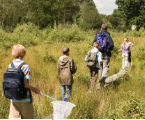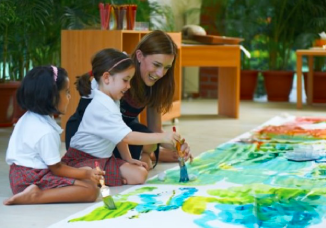Nature offers a world of learning opportunities that go beyond the walls of a classroom. For young learners, the outdoors can become a rich and engaging environment that sparks curiosity, creativity, and a love for discovery. When educators and caregivers use nature as a learning tool, they tap into an endless source of hands-on experiences that support development in meaningful ways.
Why Nature Supports Learning
Natural settings invite exploration. Whether it’s observing insects under a log, counting pebbles by a stream, or listening to birdsong in the trees, outdoor moments sharpen observation skills and inspire questions. These experiences encourage children to be active participants in their learning, using all their senses to make sense of the world.
Studies have also shown that time spent in nature can improve focus, reduce stress, and boost emotional well-being. When children learn outside, they often feel more relaxed and engaged, making it easier for them to retain new ideas.
Practical Ways to Learn Through Nature
1. Nature Walks with Purpose
A simple walk can turn into a mini science or storytelling adventure. Encourage children to collect leaves, look for animal tracks, or identify different sounds. You can also bring clipboards for drawing or note-taking.
2. Outdoor Counting and Sorting
Rocks, sticks, flowers, or pinecones can become fun, natural counting tools. Children can group items by size, color, or texture, supporting early math and sorting skills.
3. Building and Creating with Natural Materials
Invite children to build simple structures with twigs and stones or create artwork using leaves and petals. These activities promote fine motor skills, problem-solving, and imaginative play.
4. Gardening Together
Tending to a small garden—even just a few potted plants—teaches responsibility, patience, and care for living things. It’s also a great way to explore plant life cycles and healthy eating habits.
5. Storytelling Inspired by Nature
Ask children to tell a story about a bug they saw or a tree they like. Let their surroundings guide their narratives. This fosters language development and encourages creative thinking.
Encouraging Respect for the Environment
Using nature as a learning tool also helps children build a respectful connection with the Earth. They begin to understand the importance of caring for living things and protecting natural spaces. Through thoughtful conversations and example, educators can show how small actions—like not picking too many flowers or cleaning up after picnics—make a difference.
Final Thoughts
Nature is a powerful, accessible, and inspiring teacher. By making outdoor time a regular part of learning, we give children the chance to grow their minds and hearts in harmony with the world around them. Whether in a forest, garden, or local park, the lessons learned in nature are ones they’ll carry for life.


